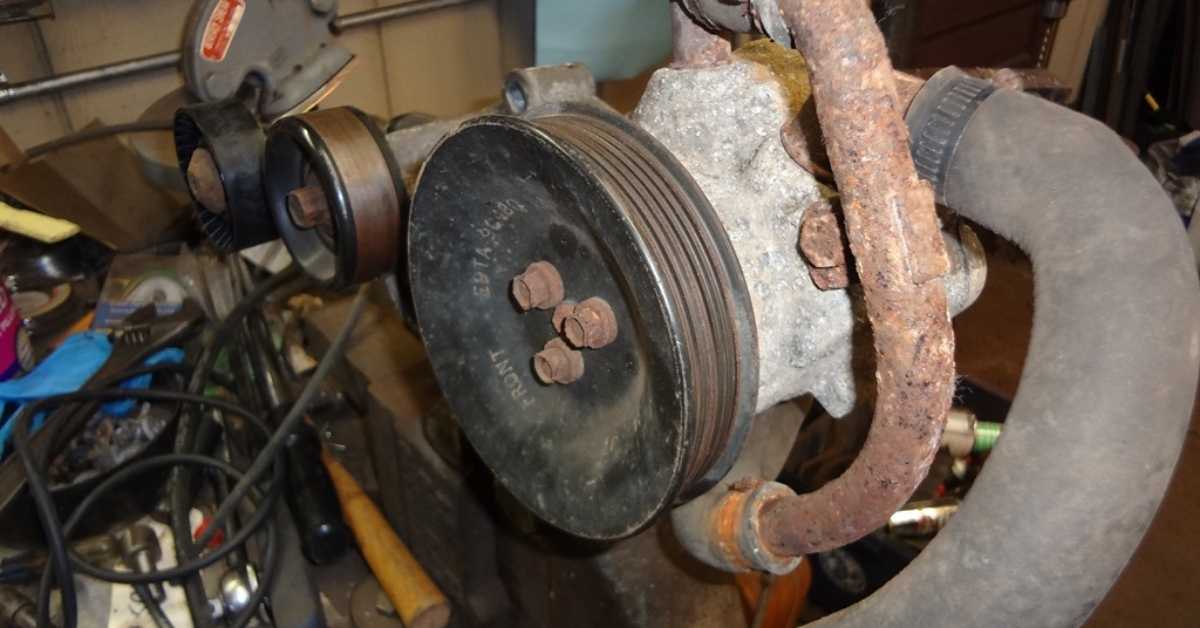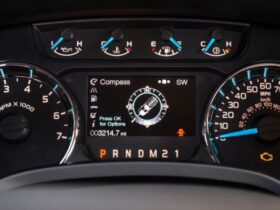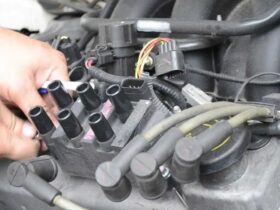Removing a smog pump from a 5.0 Ford F150 can be challenging for some, particularly for those unfamiliar with automotive repairs. The smog pump, located either on the engine surface or within the engine bay, plays a crucial role in the truck’s emission system. Proper removal requires careful attention to detail, the right tools, and safety precautions.
What is a Smog Pump?
A smog pump, also known as a secondary air injector, is a device that introduces clean air into the exhaust system. This process helps ignite unburned fuel and reduce harmful emissions. By improving fuel efficiency and minimizing pollutants, the smog pump contributes to environmental protection and supports smoother engine performance.
- Purpose: Pushes clean air into the diverter valve to burn leftover fuel in the exhaust.
- Benefits:
- Enhances fuel economy by utilizing unburned fuel.
- Reduces harmful emissions, thereby mitigating environmental pollution.
- Plays a role in limiting the release of toxic gases like nitrogen oxide.
Additionally, running the smog pump for one to two minutes before starting the engine is essential for optimal performance.
How to Remove the Smog Pump from a 5.0 F150
Removing the smog pump requires specific tools, attention to detail, and patience. Here’s a step-by-step guide to help you through the process.
1. Gather Necessary Tools and Materials
Before starting, assemble the required tools to avoid unnecessary delays. Essential items include:
- A repair manual for detailed instructions.
- Safety glasses and gloves for protection.
- A ratchet set for loosening bolts and removing the serpentine belt.
2. Locate the Smog Pump
The smog pump is typically found on the engine’s surface or in the bay. Identifying its exact location is crucial for a smooth removal process.
3. Remove the Serpentine Belt
The serpentine belt drives various engine components and needs to be removed first:
- Use a ratchet to release the belt from the tensioner.
- Carefully note the belt’s position to ensure proper reinstallation. Taking a photo or video with your smartphone can be helpful.
- Remember that V8 engines in the F150 use a serpentine belt with multiple pulleys, whereas a V-belt runs over a single accessory.
4. Disconnect Hoses and Vacuum Lines
- Detach all hose connections by unscrewing the clamps.
- Identify and disconnect the electrical connections and vacuum lines attached to the smog pump.
5. Detach the Smog Pump
- Use the ratchet to unscrew the mounting bolts securing the smog pump in place.
- Bolts are often located near the tensioner assembly or under the engine bracket.
- Slide the smog pump out of its position and dispose of it if it is faulty.
6. Install a New Smog Pump
To replace the smog pump:
- Position the new pump on the engine and secure it using the mounting bolts.
- Reconnect the hoses, vacuum lines, and electrical connections.
- Reinstall the serpentine belt, referring to your previously taken photo or video if needed.
Signs of a Failing Smog Pump
A faulty smog pump can cause various engine and emission problems. Common symptoms include:
- Check Engine Light: A warning light may indicate secondary air injection system issues.
- Engine Performance Issues include low idle, poor acceleration, and rough running.
- Increased Emissions: A malfunctioning pump can lead to higher pollutant levels.
- Catalytic Converter Damage: A defective smog pump affects the converter’s ability to process toxic compounds.
To diagnose the issue, inspect the combination valve and control relay or perform an acoustic test to check for unusual sounds.
Why Remove a Smog Pump?
While the smog pump is essential for emission control, there are valid reasons for its removal or replacement:
- Improve Engine Performance: A bad smog pump can disrupt engine function, causing rough idling and stalling.
- Protect the Catalytic Converter: Replacing a faulty pump ensures the converter can process emissions effectively.
- Prevent Misfires: Insufficient air mixing with fuel can lead to misfires, damaging engine components.
- Fix Valve Leakage: A leaking check valve can reverse fluid flow, causing corrosion and potential system failure.
- Reduce Emissions: Replacing a failing smog pump helps maintain low emission levels.
Replacement Costs
The cost of replacing a smog pump can vary based on several factors, such as the quality of the new pump and labor charges:
- Pump Cost: $110 to $279.
- Labor Charges: $75 to $120.
- Total Estimated Cost: $185 to $399.
While hiring a professional can save time, doing the replacement yourself can significantly reduce costs. However, ensure you follow proper procedures to avoid complications.
Driving Without a Smog Pump
Although driving without a smog pump is technically possible, it is not recommended. Removing the pump may lead to:
- Engine roughness and drivability issues.
- Increased pollutant emissions can harm the environment.
- Potential legal implications due to non-compliance with emission standards.
Removing or replacing a smog pump on a 5.0 F150 truck is a manageable task if approached methodically. However, professional assistance is advisable for those unsure about handling automotive repairs. Maintaining a functional smog pump ensures optimal engine performance, compliance with emission regulations, and a cleaner environment.






Leave a Reply
View Comments